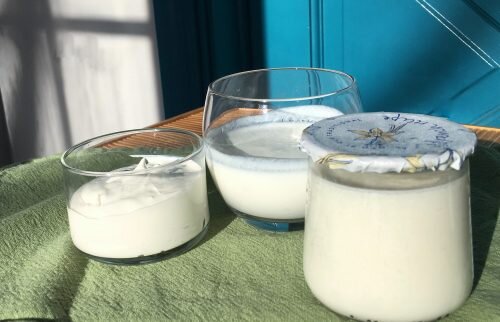Fermented Foods & Your Candida Treatment
The role of fermented foods in a program of treatment for Candida has been a controversial subject.
Some people swear that fermented foods like sauerkraut, kefir, kombucha, apple cider vinegar, and the like, are the best thing you can do for gut health. Others say, "If you have Candida, NO FERMENTED FOODS! Avoid them at all costs, because what feeds the good bacteria, also feeds the bad yeast."
If you are just starting on the Candida treatment path, you’ll probably want to bookmark this page and look into our all-natural Candida Treatment first.
Why Fermented Foods Can Be Good for Your Health
The most important fact is that fermented foods are brimming with probiotics, which help re-populate the gut with “good” bacteria.
Boulder, CO, functional-medicine physician Robert Rountree often prescribes probiotic supplements to his patients. In the July/August 2017 issue of Experience Health magazine, Rountree says that probiotics are beneficial, not so much, because the specific probiotics in the supplement work in the gut, but because they lead to “improvement in overall diversity and growth in the numbers of bacteria that ferment carbohydrates to make short-chain fatty acids. It seems that the probiotic’s main effect is to help other bacteria. They come and help their friends.”
Combining high-quality probiotic supplements with probiotic foods is an ideal “friendship” for restoring your healthy microbiome.
Each type of fermented food hosts a unique profile of probiotics, or good bacteria, so it makes sense to rotate more than one into your diet.
Naturopath Eric Bakker is a fan of the fermented milk called kefir, which tastes sort of like liquid yogurt. He even prescribes kefir to Candida patients.
The beverage made with kefir grains from the Caucasus region of Asia has been studied and recommended by the National Institute of Health. Dr. Bakker believes that kefir also is of benefit in fighting Small Intestinal Bacterial Overgrowth (SIBO), intestinal permeability (leaky gut), constipation and diarrhea, as well as offering beneficial effects on cholesterol, blood pressure, sugar metabolism, the immune system and general organ function.
Here are some other common fermented foods, plus a few you may not have heard of, that can support your Candida treatment:
Yogurt is fermented milk. Note: while you can buy yogurt made from cow, goat and sheep milk, almond or cashew milk, or coconut milk, stick to the plain. The flavored kinds are packed with sugar and sugar does not help your Candida recovery at all!
Pickles – But not the pasteurized kind in white vinegar. The kind of pickles fermented in brine (salt water) are the ones with a probiotic benefit.
Tofu and Miso. These are both soybean products, and often used as a protein source by vegetarians and vegans. Tofu is a firm, cheese-like substance that takes on the flavor of spices and seasonings in soup, stir-frys and so on. Not all tofu is fermented, but the fermented type is more-easily digested and contains probiotics. Miso is a soybean paste that can be combined with things like hummus for a tangy flavor.
Tempeh is a fermented bean “cake” (often soybeans, but sometimes lentil and other beans and pulses) that has a chewy texture and is often substituted for meat in vegan sandwiches.
Kombucha is a fermented tea available in a variety of flavors. "Make sure the label says ‘raw' and that the formula contains little or no added sugar," cautions Jayson Calton, PhD, co-author of “The Micronutrient Miracle.” (Personal note: Maybe because the ingredients for kombucha include sugar and yeast, I can tolerate only tiny amounts of it–a very little goes a long way! Apparently, kombucha can even contain strains of Candida albicans!)
Sauerkraut is an excellent fermented food. Again, you want to look for the living product in the refrigerator section, rather that the pasteurized sauerkraut on the shelf in the jar.
Kimchi is probably the top probiotic fermented food, and also has the boldest taste. It is somewhat like sauerkraut, but contains garlic, chilies, ginger and fish sauce, as well as chopped cabbage. A Central American cousin from El Salvador is called Curtido, a fermented salsa consisting of cabbage, onions and chilies, and other vegetables.
If you are really brave, you might want to shop your local Asian food market for Natto, which is also called “stinky tofu.” Although the name says it all, the Japanese swear by this fermented food as a way of maintaining low blood pressure as well as keeping calcium in your bones and out of your arteries for a healthy heart and brain.
If you have Candida, are these healthy, fermented foods helpful or not?
Bottom line, it depends!
Each person’s body, sensitivity, and Candida load is different. We believe that everyone needs to take responsibility for his or her own health, by coming to know your own system and how it responds.
So, if you are just getting a handle on treating your Candida and are going through detox, it would be wise to keep pursuing your Candida treatment program as the first priority and hold off for a few months on the fermented food.
When your symptoms have subsided, we recommend experimenting, one fermented food at a time. For example, try a little (maybe a teaspoon) of apple cider vinegar in water before a meal for a week and see how you respond. If you feel good, add a bit more. The following week, try a few tablespoons of sauerkraut with your protein, or perhaps 1/4 cup of kombucha, or a few small pickles.
Start with small amounts, and don’t introduce more than one fermented food at a time.
Remember, you are inviting new friends to the “party” in your gut and you don’t want to overwhelm yourself with too many new “faces” at once. If your Candida flares up, back off, but don’t lose hope. It may just not be the right time. You will soon learn what you can tolerate, and in a few months, you can try again.
And remember to add some pre-biotics, or fiber, so your new party guests have something to munch on!
Yours for Health and Healing,
Your Friends at Candida Support




